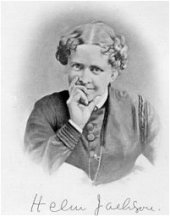 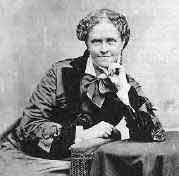 Helen
Hunt Jackson (1830-1885), activist for Native American rights and author
of Southern California’s most enduring historical romance novel Ramona,
was born and reared in Amherst, Massachusetts, a schoolmate and friend
of the woman who would become Amherst’s most celebrated resident, poet
Emily Dickinson. (Born Helen Maria Fiske, Jackson would be twice
married: first to U.S. Army Capt. Edward B. Hunt who died in a military
accident, then to William S. Jackson, a wealthy banker and railroad executive.)
Jackson grew up in a literary environment, and using a pseudonym (H.H.H),
was herself a noted poet and writer of children’s stories, novels and essays
before turning her considerable intellect and energy to investigating and
publicizing the mistreatment of Native Americans, especially the Mission
Indians of Southern California. Helen
Hunt Jackson (1830-1885), activist for Native American rights and author
of Southern California’s most enduring historical romance novel Ramona,
was born and reared in Amherst, Massachusetts, a schoolmate and friend
of the woman who would become Amherst’s most celebrated resident, poet
Emily Dickinson. (Born Helen Maria Fiske, Jackson would be twice
married: first to U.S. Army Capt. Edward B. Hunt who died in a military
accident, then to William S. Jackson, a wealthy banker and railroad executive.)
Jackson grew up in a literary environment, and using a pseudonym (H.H.H),
was herself a noted poet and writer of children’s stories, novels and essays
before turning her considerable intellect and energy to investigating and
publicizing the mistreatment of Native Americans, especially the Mission
Indians of Southern California.
Her interest in the subject began in Boston in 1879 at
a lecture by Chief Standing Bear who described the forcible removal of
the Ponca Indians from their Nebraska reservation. Jackson was incensed
by what she heard and began to circulate petitions, raised money, and wrote
letters to the New York Times on the Poncas’ behalf. As one observer
noted, she became a "holy terror." (Friends and critics have variously
described her as "passionate," "volatile," "defiant" and "uncompromising."
Historian Antoinette May said she "lived a life that few women of her day
had the courage to live.") Jackson also began work on a book condemning
the government’s Indian policy and its record of broken treaties. When
A Century of Dishonor was published in 1881, Jackson sent a copy to every
member of Congress with the following admonition printed in red on the
cover: "Look upon your hands: they are stained with the blood of your relations."
To her disappointment, the book had little impact.
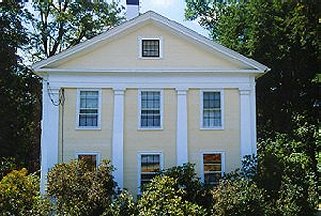 In
need of a rest, Jackson traveled to Southern California to study the area’s
missions, a subject that had piqued her interest during an earlier visit.
While in Los Angeles, she met Don Antonio Coronel, former mayor of Los
Angeles (1853-4), city councilman (1854-66) and State Treasurer (1866-70).
Coronel was a well-known authority on early Californio life in Southern
California, and also a former inspector of missions for the Mexican government.
He described to Jackson the plight of Mission Indians after 1833, when
secularization policies led to the sale of mission lands and the dispersal
of their residents. "…Many of the original Mexican grants included clauses
protecting the Indians on the lands they occupied," writes Valerie Mathes,
author of Helen Hunt Jackson: Official Agent to the California Mission
Indians. "When Americans assumed control," Mathes continues, "they ignored
Indian claims to lands, which led to their mass dispossessions. In 1852,
there were an estimated 15,000 Mission Indians in Southern California,
but because of the adverse impact of dispossessions by Americans, they
numbered less than 4,000 by the time of Helen’s visit." In
need of a rest, Jackson traveled to Southern California to study the area’s
missions, a subject that had piqued her interest during an earlier visit.
While in Los Angeles, she met Don Antonio Coronel, former mayor of Los
Angeles (1853-4), city councilman (1854-66) and State Treasurer (1866-70).
Coronel was a well-known authority on early Californio life in Southern
California, and also a former inspector of missions for the Mexican government.
He described to Jackson the plight of Mission Indians after 1833, when
secularization policies led to the sale of mission lands and the dispersal
of their residents. "…Many of the original Mexican grants included clauses
protecting the Indians on the lands they occupied," writes Valerie Mathes,
author of Helen Hunt Jackson: Official Agent to the California Mission
Indians. "When Americans assumed control," Mathes continues, "they ignored
Indian claims to lands, which led to their mass dispossessions. In 1852,
there were an estimated 15,000 Mission Indians in Southern California,
but because of the adverse impact of dispossessions by Americans, they
numbered less than 4,000 by the time of Helen’s visit."
Don Coronel’s stories galvanized Jackson into action.
Soon her efforts on behalf of dispossessed Indians in Southern California
came to the attention of the U.S. Commissioner of Indian Affairs, Hiram
Price, who recommended her appointment as an Interior Department agent.
Her assignment was "to visit the Mission Indians in California, and ascertain
the location and condition of various bands…and what, if any land, should
be purchased for their use." With the assistance of Indian agent and entrepreneur
Abbot Kinney, Jackson criss-crossed Southern California, documenting the
appalling conditions they saw. At one point, she hired a law firm to protect
the rights of a family of Saboba Indians facing dispossession of their
land at the foot of the San Jacinto Mountains. Her 56-page report, completed
in 1883, called for a massive government relief effort, ranging from the
purchase of new lands for reservations to the establishment of more Indian
schools. A bill largely embodying Jackson’s recommendations passed the
U.S. Senate but died in the House.
Undaunted by Congress’ rejection, Jackson decided to write
a novel that would depict the Indian experience "in a way to move people’s
hearts." She was particularly drawn to the fate of her Indian friends in
the Temecula area of Riverside County. The inspiration for her book, Jackson
admitted, was Uncle Tom’s Cabin written years earlier by her friend, Harriet
Beecher Stowe. "If I can do one hundredth part for the Indian that Mrs.
Stowe did for the Negro, I will be thankful," she told a friend. The result
was Ramona, which Jackson began writing in a New York City hotel room in
December 1883. Originally titled, "In The Name of the Law," the book was
completed in slightly over three months and published in November 1884.
"Every incident in Ramona…is true," Jackson said later. "A Cahuilla Indian
was shot two years ago exactly as Alessandro is – and his wife’s name was
Ramona and I never knew this last fact until Ramona was half written!"
Later, a local writer, George Wharton James, would lecture and write books
linking Ramona to an actual murder. He even recorded the murderer's
voice on an early Edison cylinder phonograph!
Encouraged by the book’s popularity, Jackson planned to
write a children’s story on the Indian issue, but died of cancer on August
12, 1885, less than a year after Ramona was published. Her last letter
was written to President Grover Cleveland, urging him to read her early
work, "A Century of Dishonor." Jackson told a friend: "My Century of Dishonor
and Ramona are the only things I have done of which I am glad…They will
live, and…bear fruit." Ramona has indeed borne fruit over the years, but
in ways unimagined by the author. Writing in "Los Angeles: A to Z," Leonard
and Dale Pitt note: "Although Jackson’s novel, about a part-Indian orphan
raised in Spanish society and her Indian husband, achieved almost instant
success, it failed to arouse public concern for the treatment of local
Native Americans. Instead, readers accepted the sentimentalized Spanish
aristocracy that was portrayed, and the Ramona myth was born. Jackson died
a year after her novel was published, never knowing the impact her book
made on the Southern California heritage. The novel Ramona has inspired
films [the first directed by D.W. Griffith], songs [the 1920s hit "Ramona"],
and a long-running pageant in Hemet, California. And the name Ramona
can be see on street signs and commercial establishments throughout Southern
California." --- contributed
by Albert Greenstein, 1999
Bibliography
http://guweb2.gonzaga.edu/faculty/campbell/enl311/jackson.html
Glass
Ceiling Biography of Jackson |

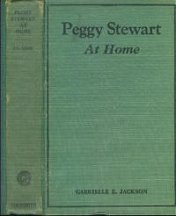
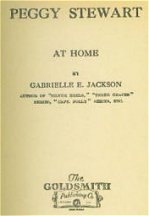
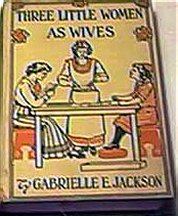
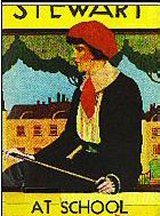
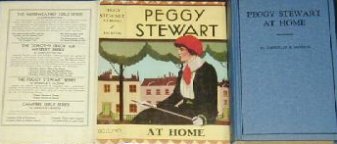
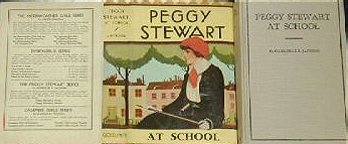
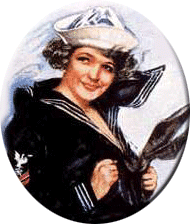
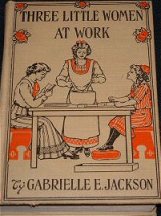
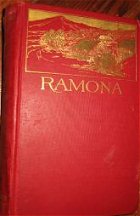
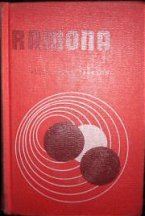 Classic
romantic story about Spanish and Indian life in California. Said
to be "one of the most artistic and charming creations of American Literature"
Helen Hunt Jackson wrote this novel in 1884 to draw attention to the plight
of dispossessed Native American tribes in the American West."Ramona blushed
as the handsome young Indian Alessandro looked upon her with favor. A great,
star-crossed love was born. But the adopted daughter of Senora Moreno was
defying the custom of her people. Her forbidden love would drive her from
place to place with Alessandro until tragedy would strike and
Ramona would at last come to an understanding of herself." "As soon as
I began, it seemed impossible to write fast enough…I wrote faster than
I would write a letter…two thousand to three thousand words in a morning,
and I cannot help it."
Classic
romantic story about Spanish and Indian life in California. Said
to be "one of the most artistic and charming creations of American Literature"
Helen Hunt Jackson wrote this novel in 1884 to draw attention to the plight
of dispossessed Native American tribes in the American West."Ramona blushed
as the handsome young Indian Alessandro looked upon her with favor. A great,
star-crossed love was born. But the adopted daughter of Senora Moreno was
defying the custom of her people. Her forbidden love would drive her from
place to place with Alessandro until tragedy would strike and
Ramona would at last come to an understanding of herself." "As soon as
I began, it seemed impossible to write fast enough…I wrote faster than
I would write a letter…two thousand to three thousand words in a morning,
and I cannot help it."
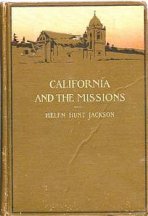 California
and the Missions: 1916 Little Brown Frontispiece of San Garlos Mission,
and 37 other text line drawings by Henry Sandham. 292 pages. A specially
illustrated collection of Ms. Jackson's mission papers, first published
in 1883
California
and the Missions: 1916 Little Brown Frontispiece of San Garlos Mission,
and 37 other text line drawings by Henry Sandham. 292 pages. A specially
illustrated collection of Ms. Jackson's mission papers, first published
in 1883
 Helen
Hunt Jackson (1830-1885), activist for Native American rights and author
of Southern California’s most enduring historical romance novel Ramona,
was born and reared in Amherst, Massachusetts, a schoolmate and friend
of the woman who would become Amherst’s most celebrated resident, poet
Emily Dickinson. (Born Helen Maria Fiske, Jackson would be twice
married: first to U.S. Army Capt. Edward B. Hunt who died in a military
accident, then to William S. Jackson, a wealthy banker and railroad executive.)
Jackson grew up in a literary environment, and using a pseudonym (H.H.H),
was herself a noted poet and writer of children’s stories, novels and essays
before turning her considerable intellect and energy to investigating and
publicizing the mistreatment of Native Americans, especially the Mission
Indians of Southern California.
Helen
Hunt Jackson (1830-1885), activist for Native American rights and author
of Southern California’s most enduring historical romance novel Ramona,
was born and reared in Amherst, Massachusetts, a schoolmate and friend
of the woman who would become Amherst’s most celebrated resident, poet
Emily Dickinson. (Born Helen Maria Fiske, Jackson would be twice
married: first to U.S. Army Capt. Edward B. Hunt who died in a military
accident, then to William S. Jackson, a wealthy banker and railroad executive.)
Jackson grew up in a literary environment, and using a pseudonym (H.H.H),
was herself a noted poet and writer of children’s stories, novels and essays
before turning her considerable intellect and energy to investigating and
publicizing the mistreatment of Native Americans, especially the Mission
Indians of Southern California.

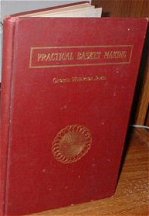
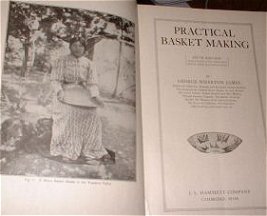
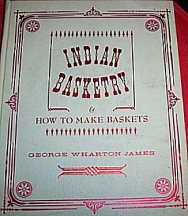
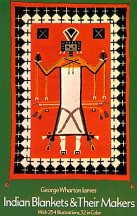
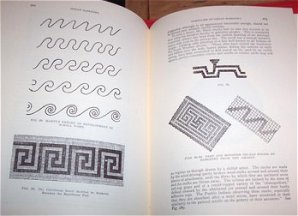
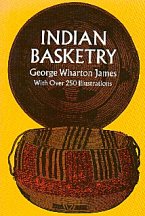
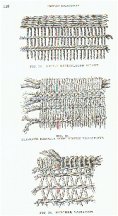
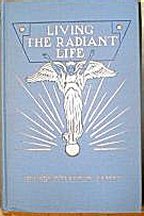 What
the White Race May Learn from the Indian ~ 1908. Chicago Forbes and
Company ~ The author "calls upon the white race to incorporate into its
civilization the good things of the Indian civilization., and to return
to the healthful and nat ural life which the Indians lived before they
came under the dominion of the Spanish padres."
What
the White Race May Learn from the Indian ~ 1908. Chicago Forbes and
Company ~ The author "calls upon the white race to incorporate into its
civilization the good things of the Indian civilization., and to return
to the healthful and nat ural life which the Indians lived before they
came under the dominion of the Spanish padres."
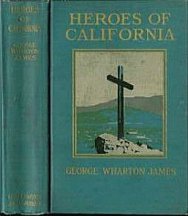
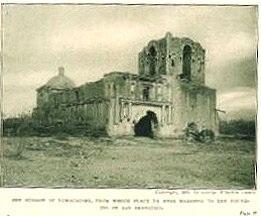
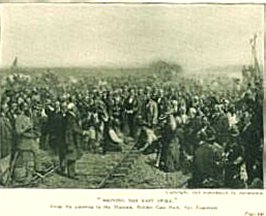
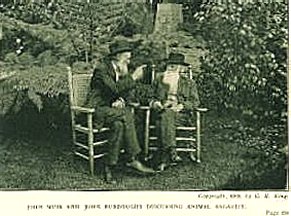
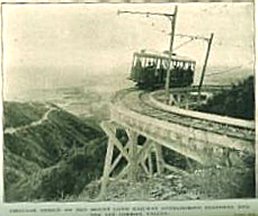
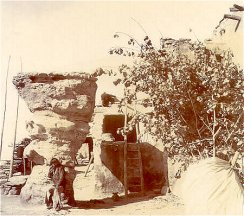
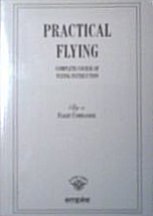
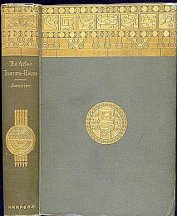 'An adult
adventure story on the concept of surviving Aztec antiquities...literate,
seriously planned and written.''--Bleiler. 19 illustrations (including
frontispiece) by Frederic Remington reproduced as black-and-white plates.
'An adult
adventure story on the concept of surviving Aztec antiquities...literate,
seriously planned and written.''--Bleiler. 19 illustrations (including
frontispiece) by Frederic Remington reproduced as black-and-white plates.
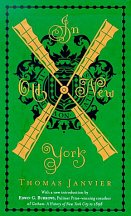 Editorial
Reviews: From Publishers Weekly: Today's New Yorkers are famous for both
their fierce loyalty to their hometown and their intense desire to tell
you how they can make it better. Things were no different in 1894, when
historian and social commentator Janvier first published this meticulously
detailed, floridly anecdotal and occasionally cranky love letter to his
adopted home, reprinted here with a helpful new introduction by Brooklyn
College history professor Edwin G. Burrows. After painstakingly outlining
the city's early growth and development, Janvier, a self-trained historian,
rants that an 1807 city commission charged with laying out the city's streets
threw away "the magnificent opportunity... to create a beautiful city."
By creating Manhattan's now famous grid of streets and avenues, they thwarted
continued development of the complex, interlocking networks of ponds, woods
and small neighborhoods that had made up the city until then. It's a classic
clash between romantic idealism and "progress," present in the writings
of Jane Jacobs and other modern urbanologists. Janvier is best when describing
the quirky, intricate history of Greenwich Village and the development
of Chelsea around the Episcopal Theological Seminary, citing both as examples
of his small-is-beautiful philosophy. A man of his time, Janvier's nativism
and racism are omnipresent: he is as likely to state that "even the bad
smells have foreign names" as he is to rhapsodize about sylvan glades.
Still, this long-out-of-print classic adds welcome historical perspective
to contemporary urban studies. (Mar.): Copyright 2000 Cahners Business
Information, Inc.
Editorial
Reviews: From Publishers Weekly: Today's New Yorkers are famous for both
their fierce loyalty to their hometown and their intense desire to tell
you how they can make it better. Things were no different in 1894, when
historian and social commentator Janvier first published this meticulously
detailed, floridly anecdotal and occasionally cranky love letter to his
adopted home, reprinted here with a helpful new introduction by Brooklyn
College history professor Edwin G. Burrows. After painstakingly outlining
the city's early growth and development, Janvier, a self-trained historian,
rants that an 1807 city commission charged with laying out the city's streets
threw away "the magnificent opportunity... to create a beautiful city."
By creating Manhattan's now famous grid of streets and avenues, they thwarted
continued development of the complex, interlocking networks of ponds, woods
and small neighborhoods that had made up the city until then. It's a classic
clash between romantic idealism and "progress," present in the writings
of Jane Jacobs and other modern urbanologists. Janvier is best when describing
the quirky, intricate history of Greenwich Village and the development
of Chelsea around the Episcopal Theological Seminary, citing both as examples
of his small-is-beautiful philosophy. A man of his time, Janvier's nativism
and racism are omnipresent: he is as likely to state that "even the bad
smells have foreign names" as he is to rhapsodize about sylvan glades.
Still, this long-out-of-print classic adds welcome historical perspective
to contemporary urban studies. (Mar.): Copyright 2000 Cahners Business
Information, Inc.
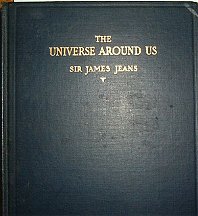
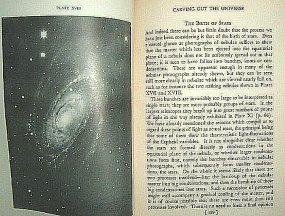
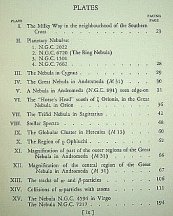
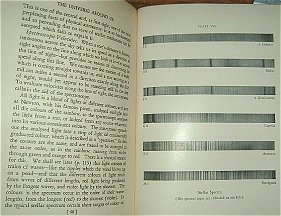
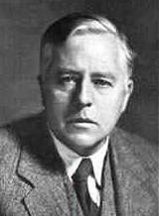 Short Encyclopedia
Bio:
Short Encyclopedia
Bio:








